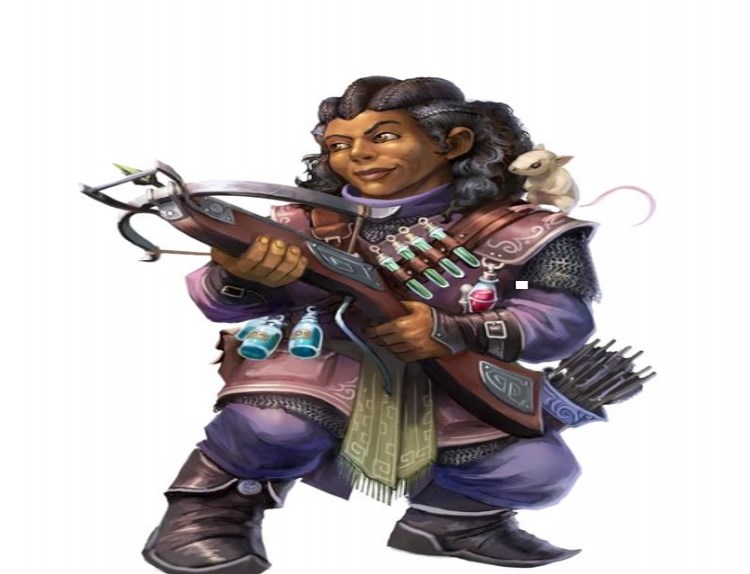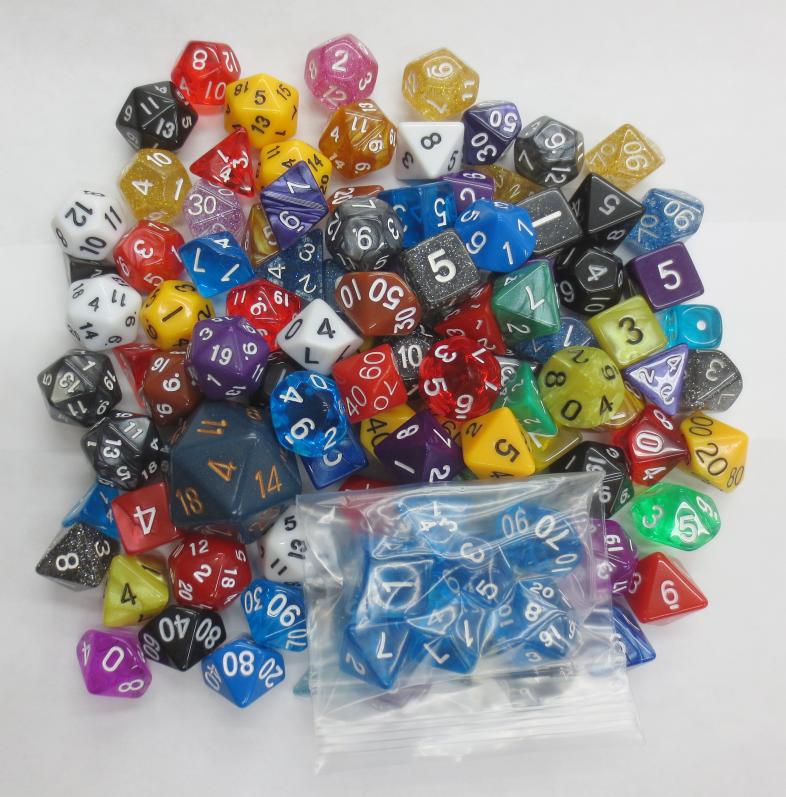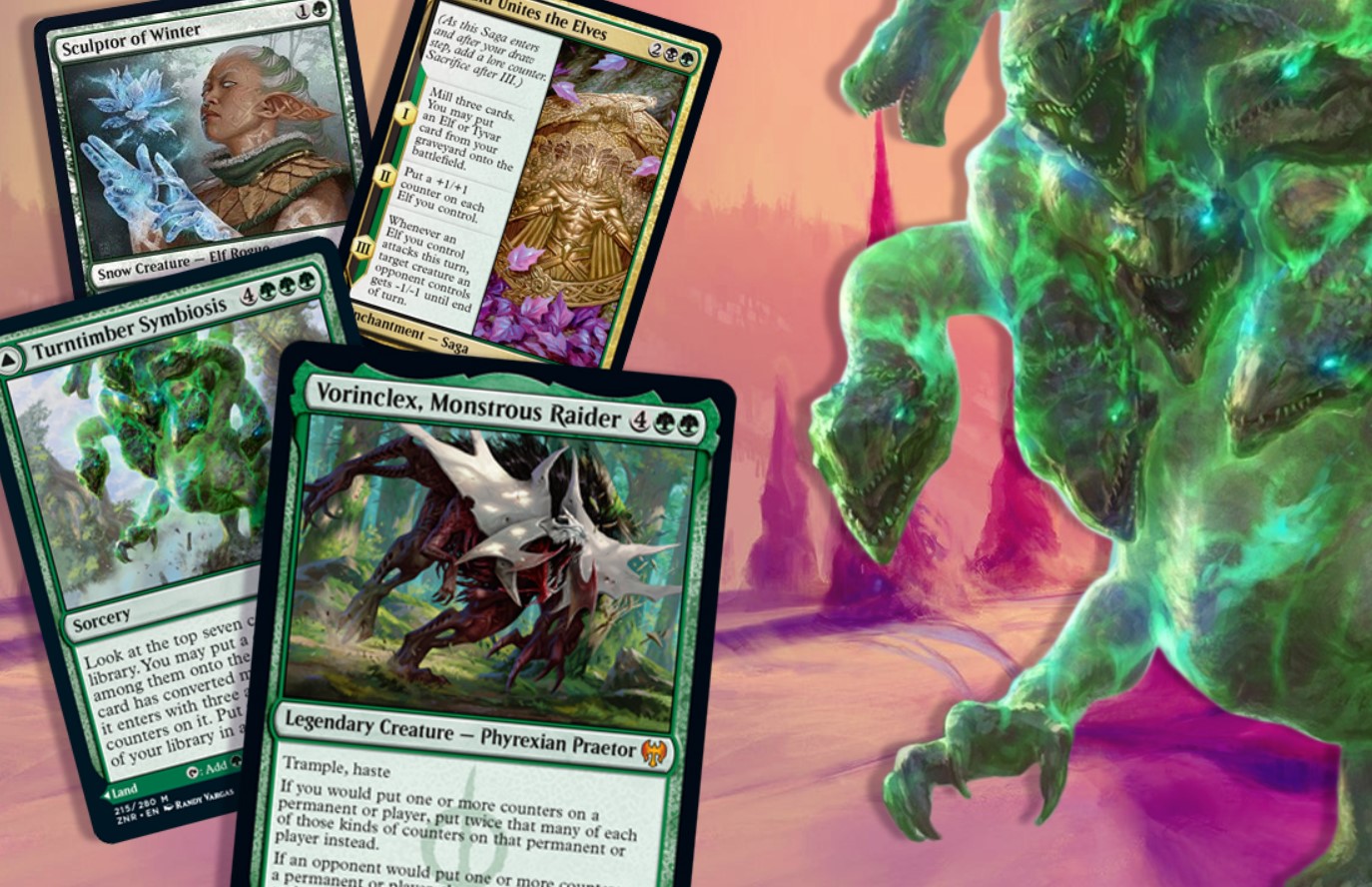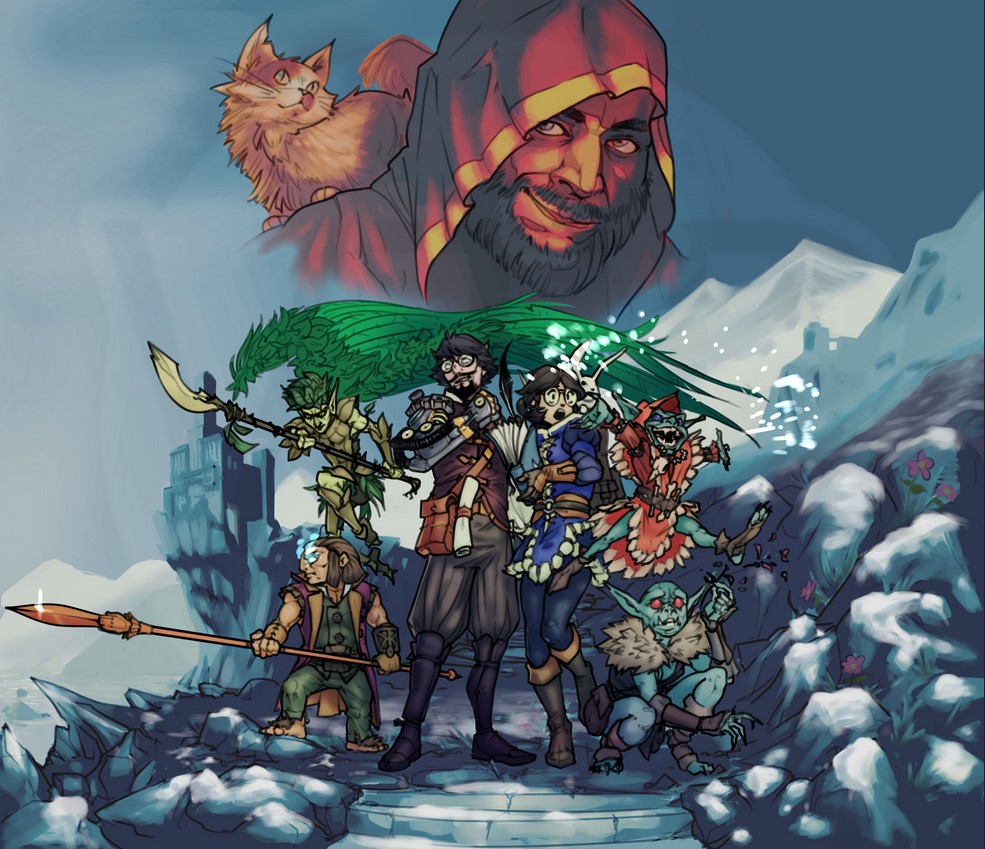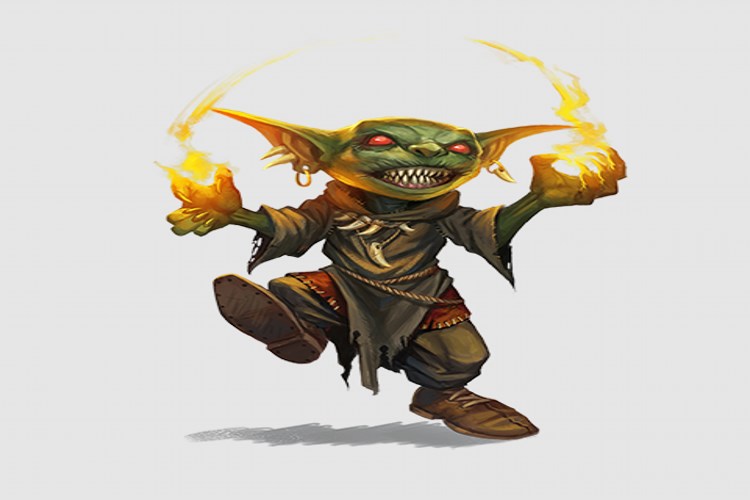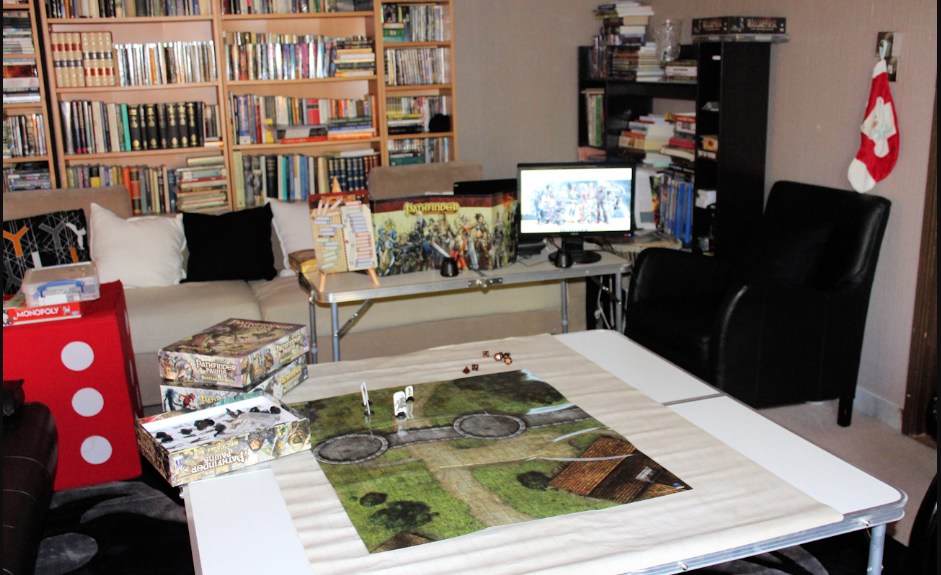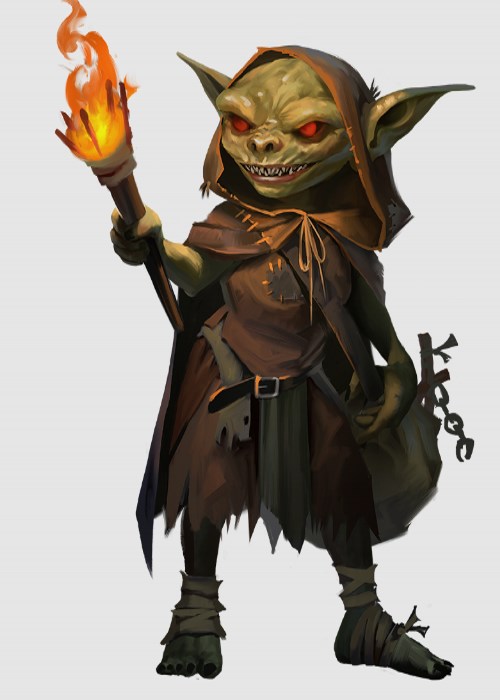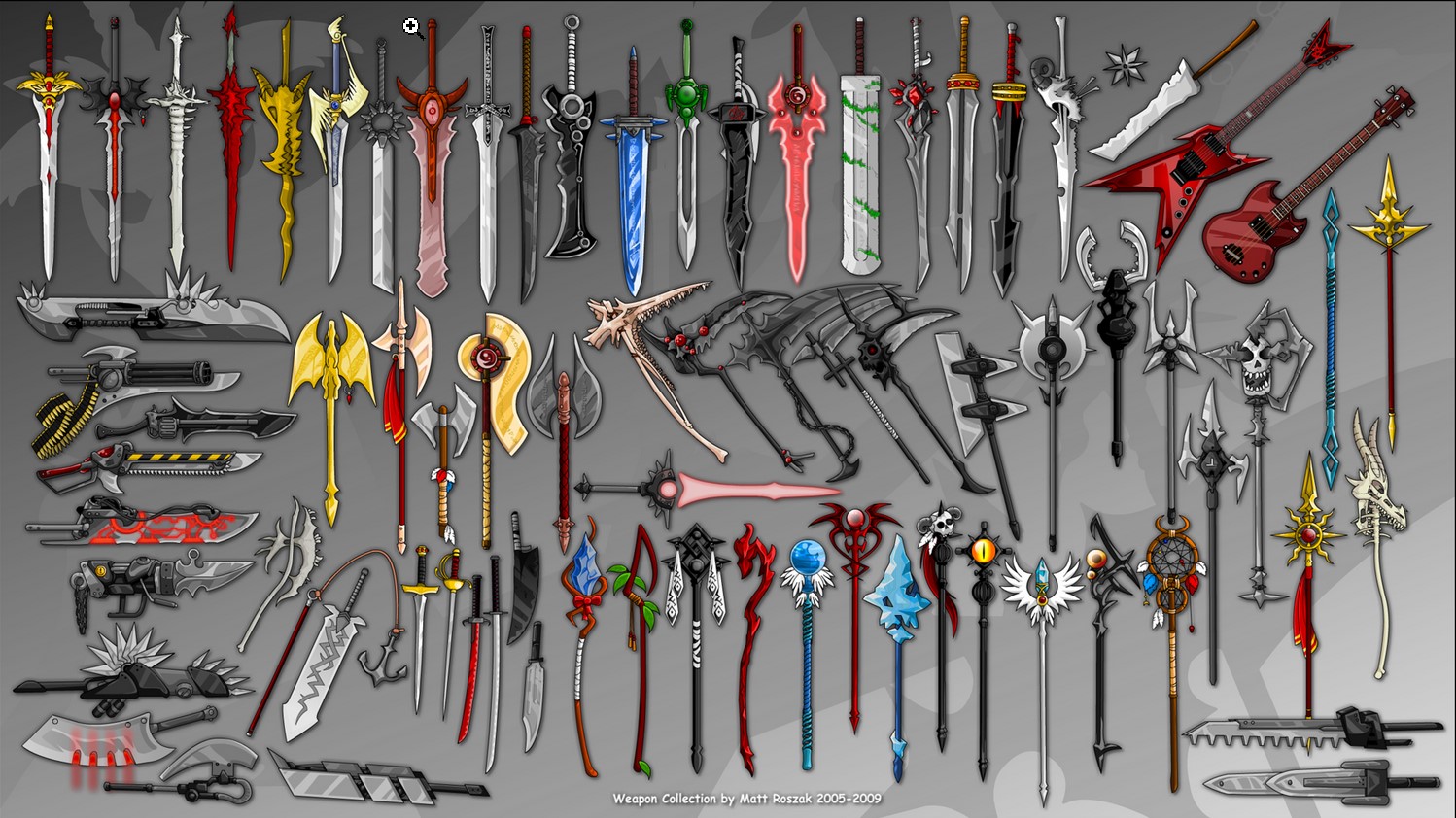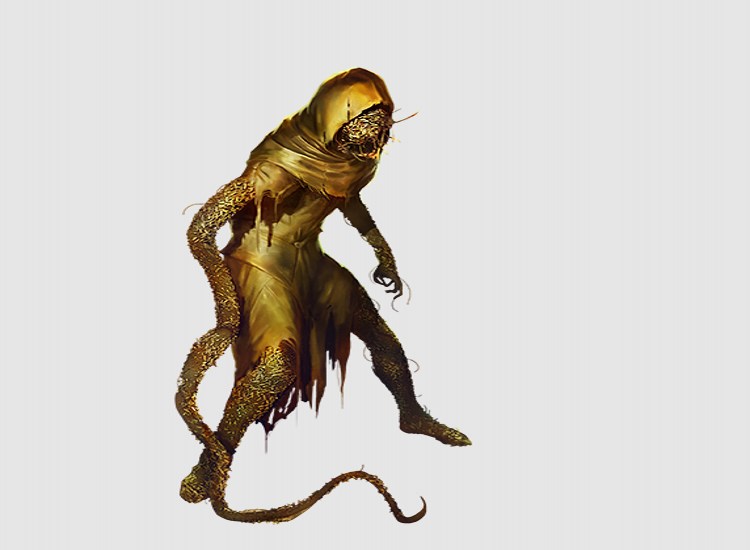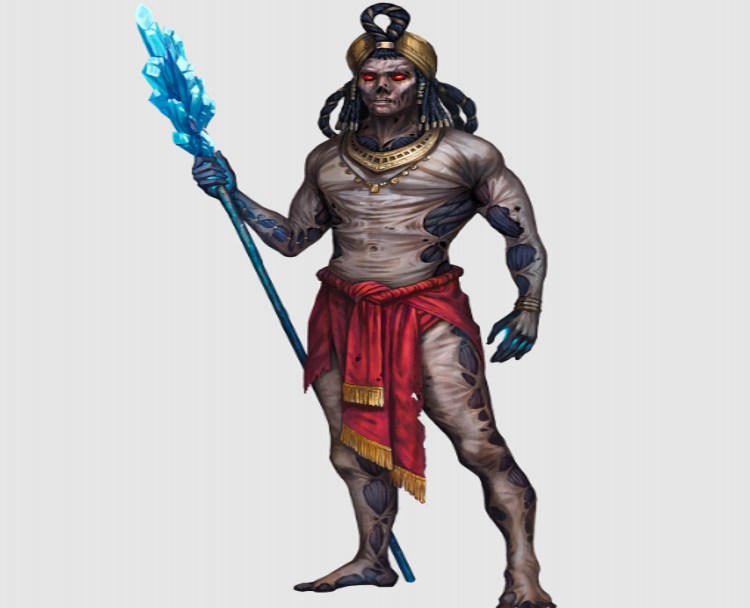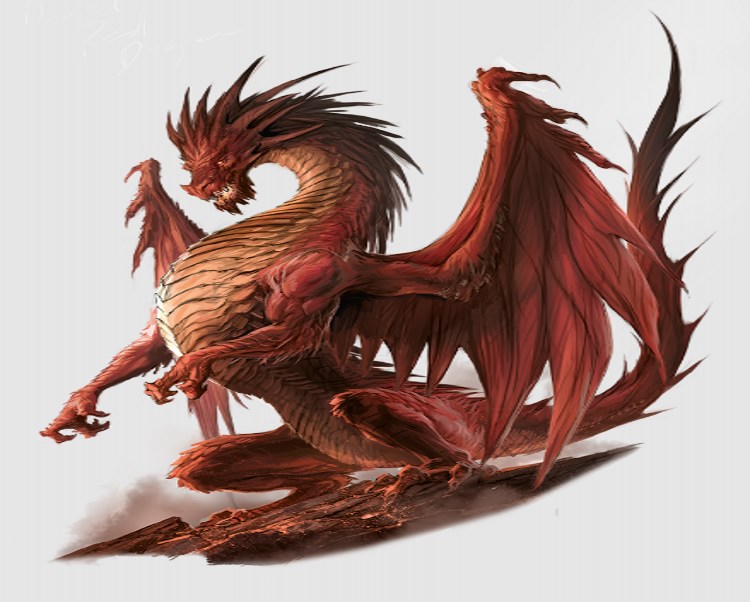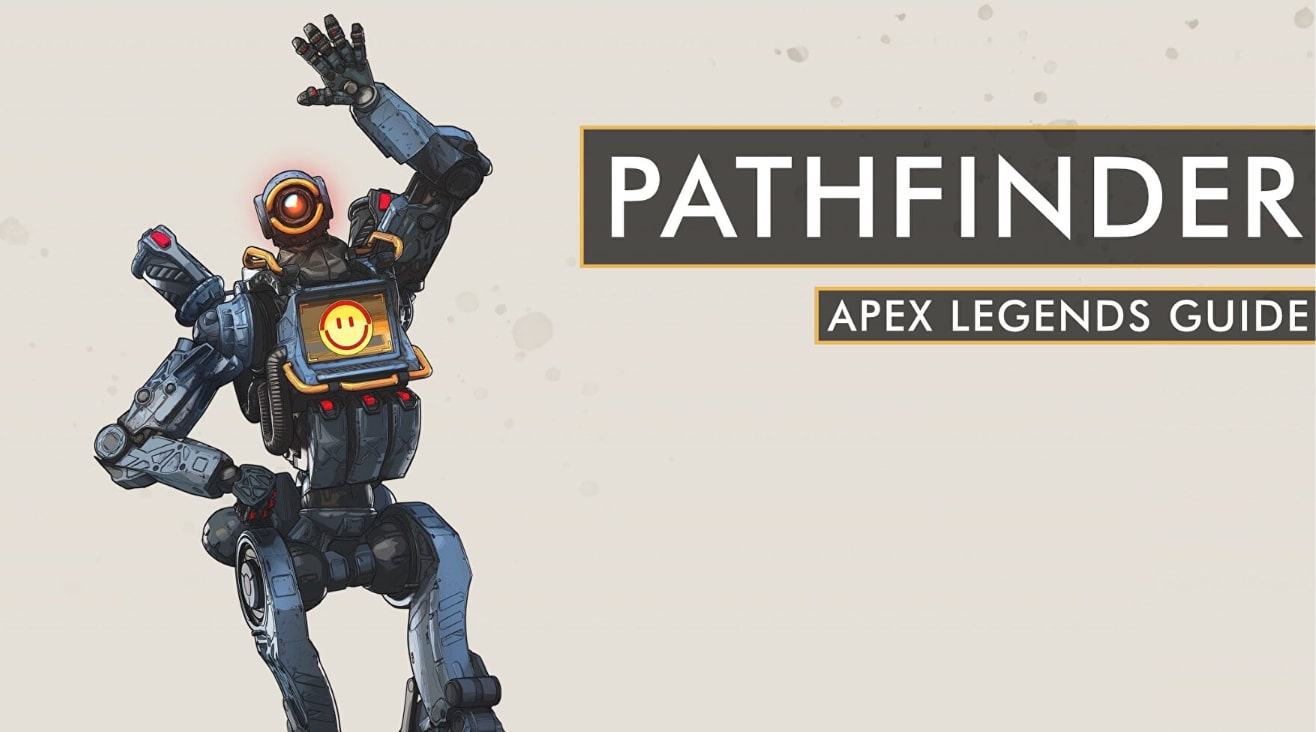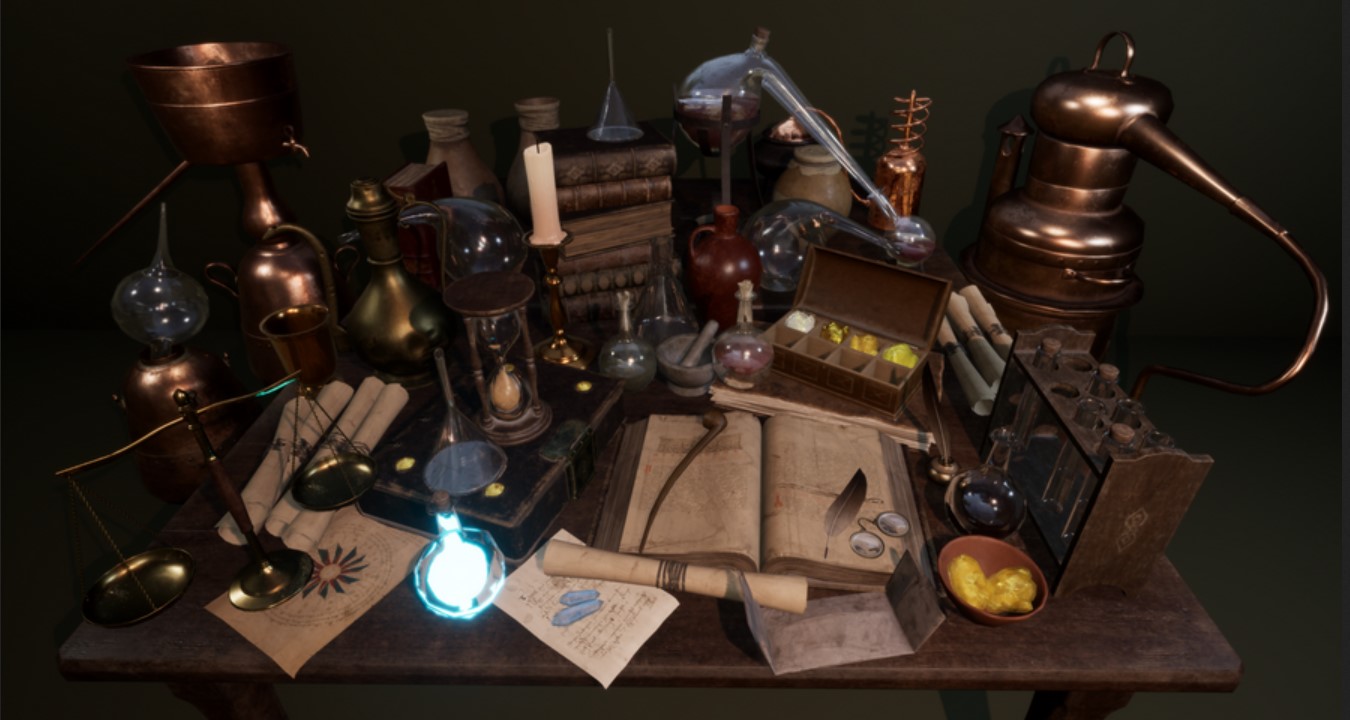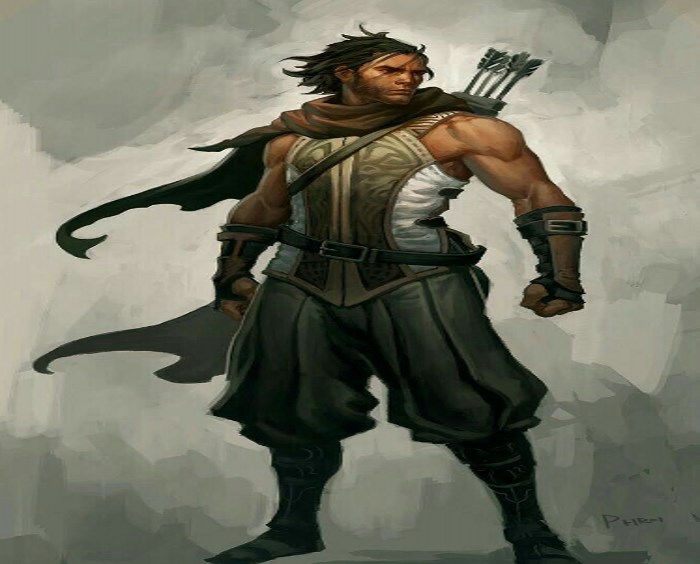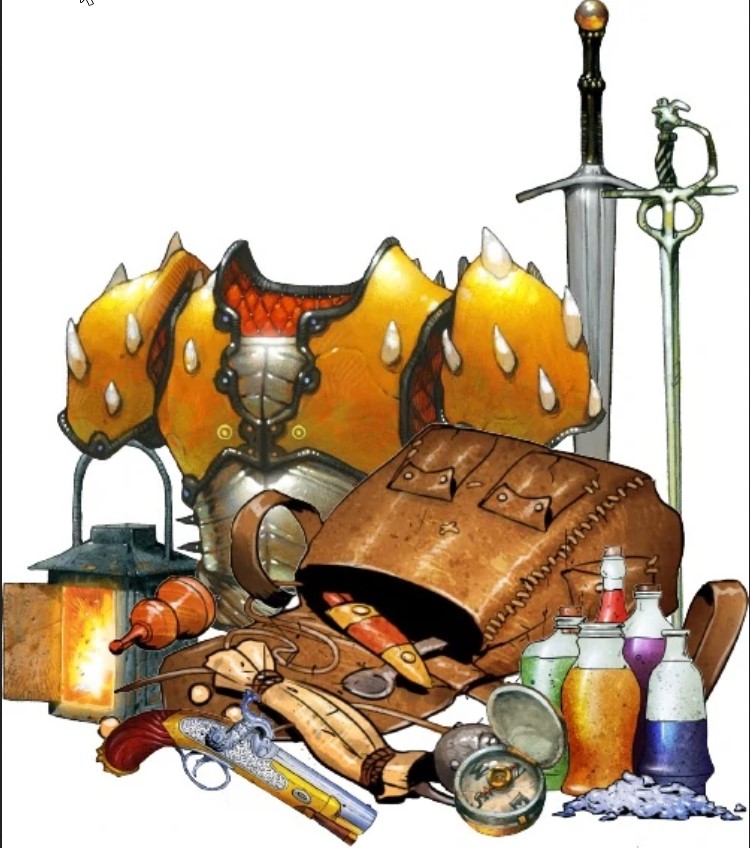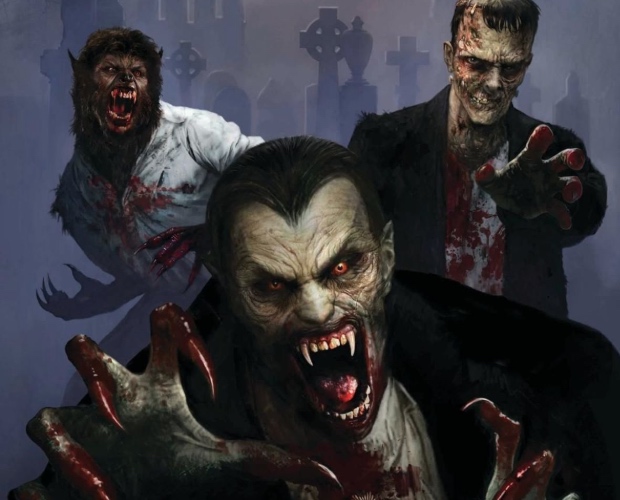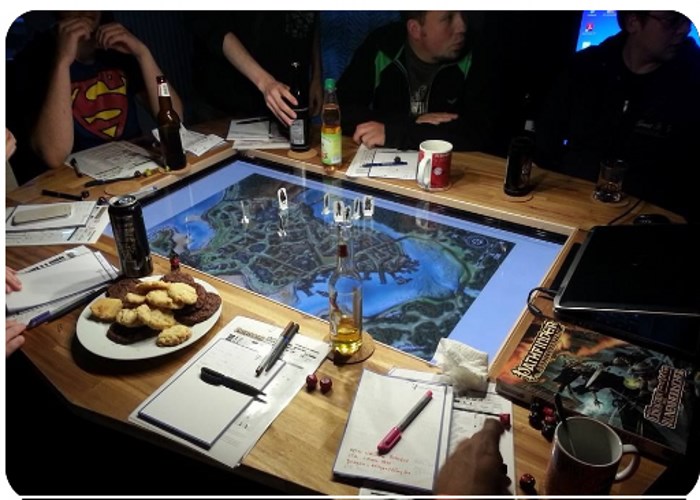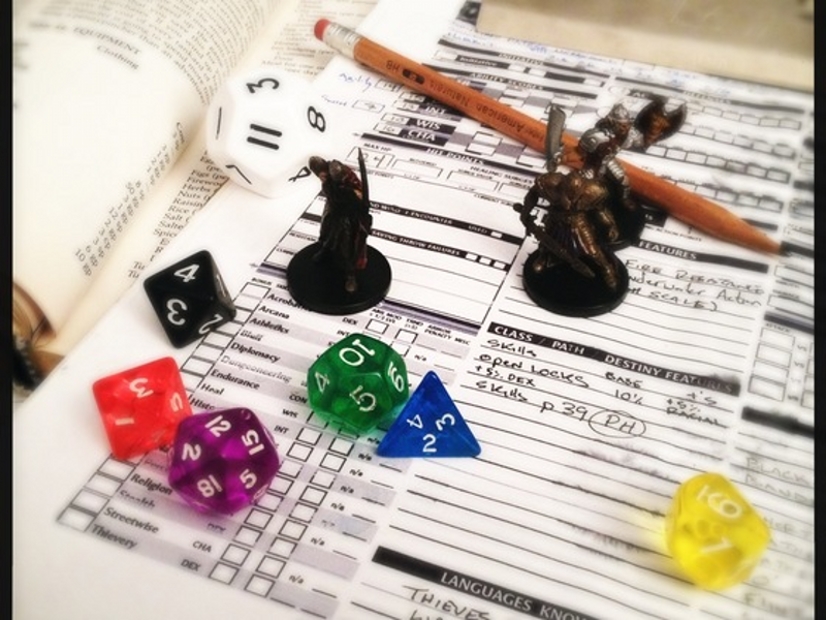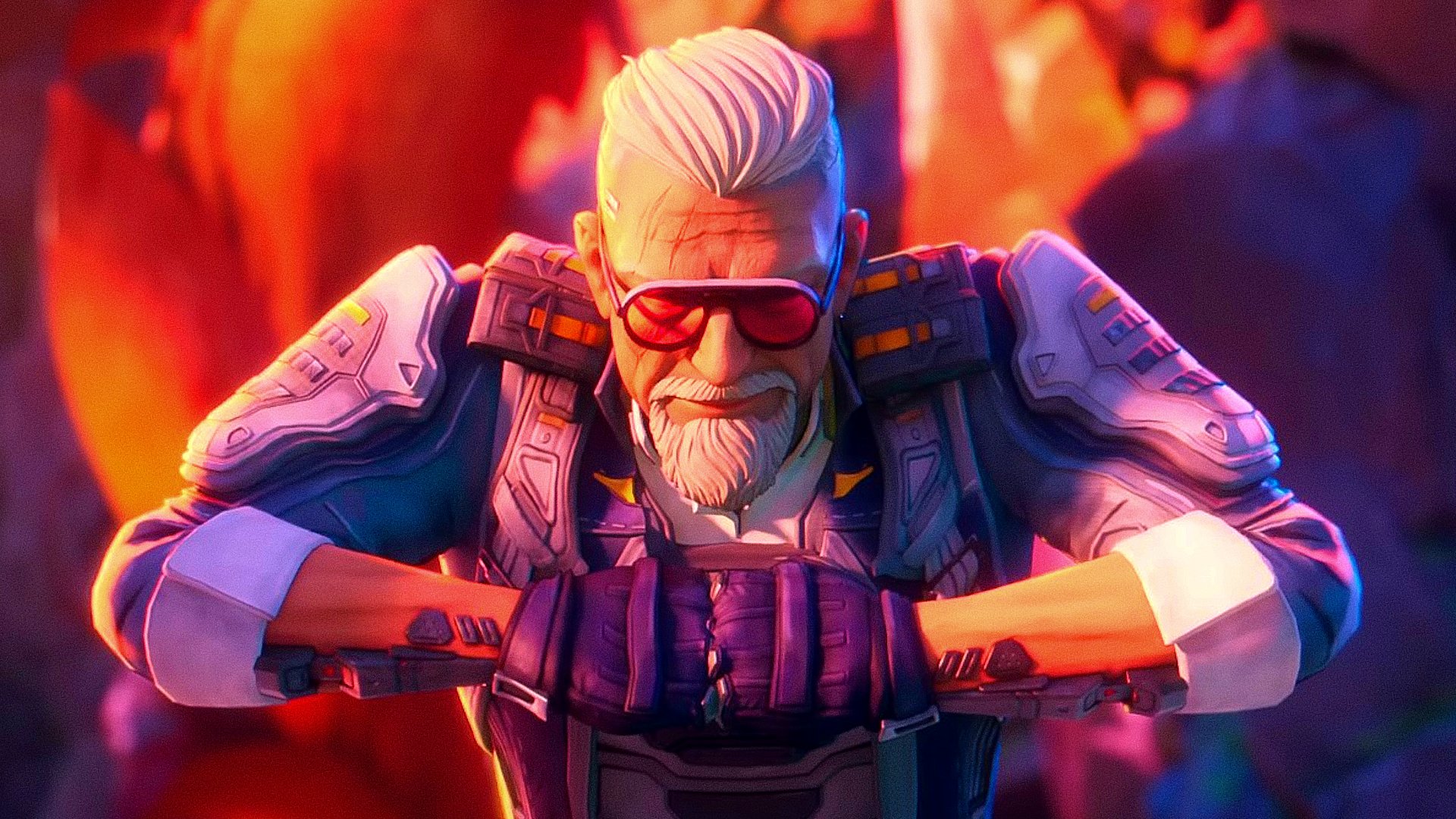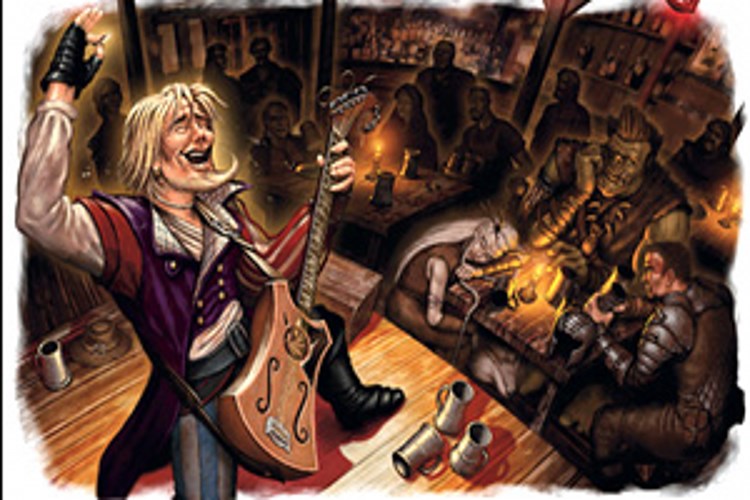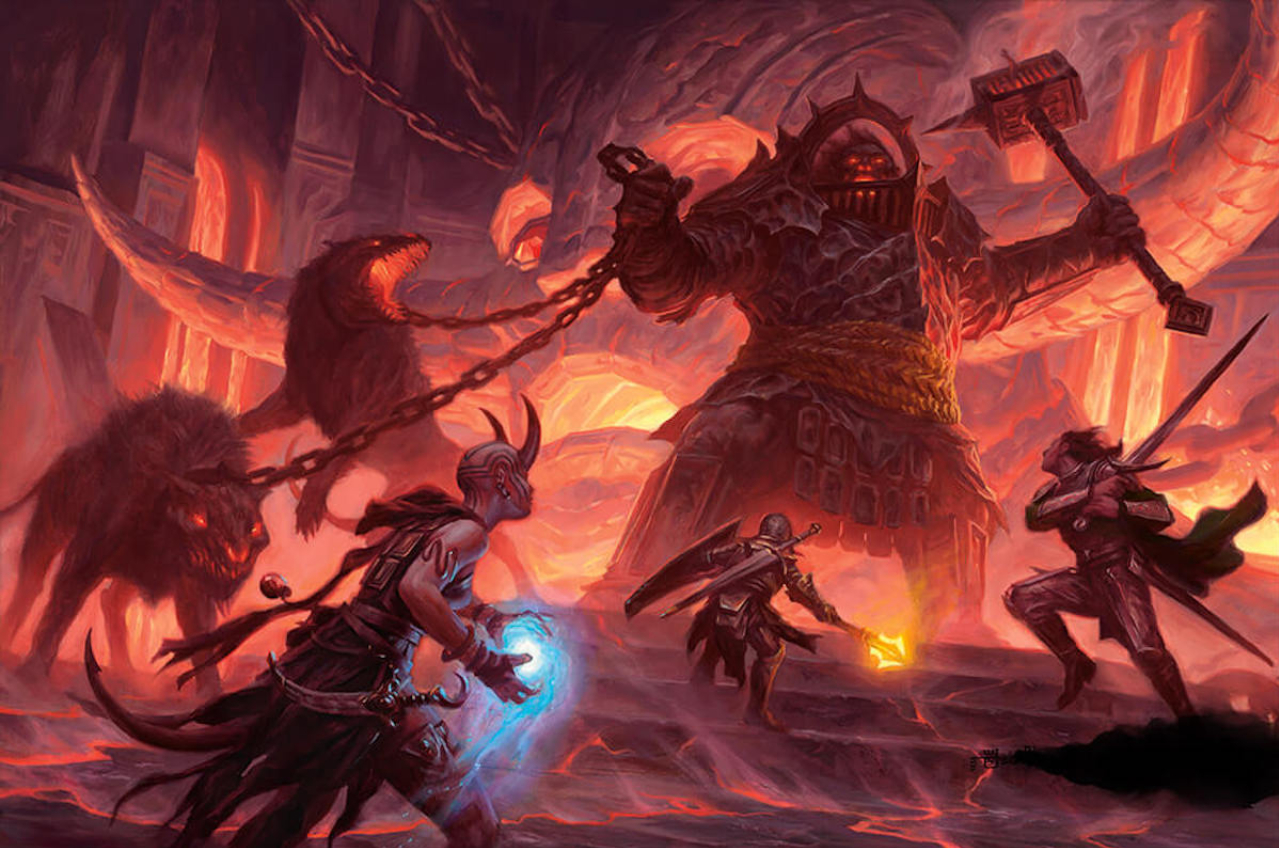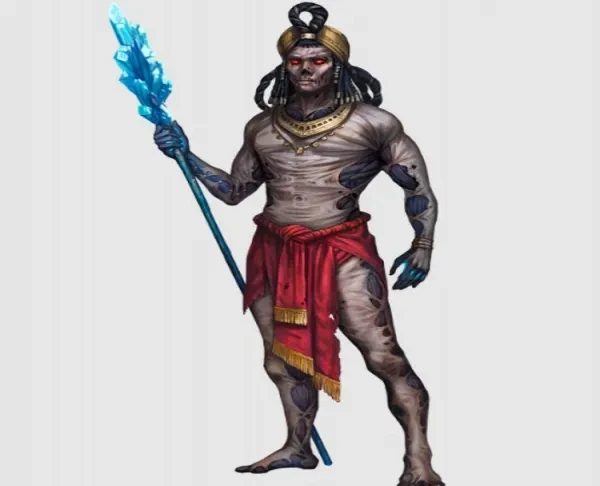
Dungeons in Pathfinder are full of various monsters that are of various degrees of horrifying. Choosing the right ones is one of the tasks of a dungeon master. To make sure your dungeons are always interesting but fair, we have compiled a list of monsters for various skill levels that you can use.
15. Ice Mummy
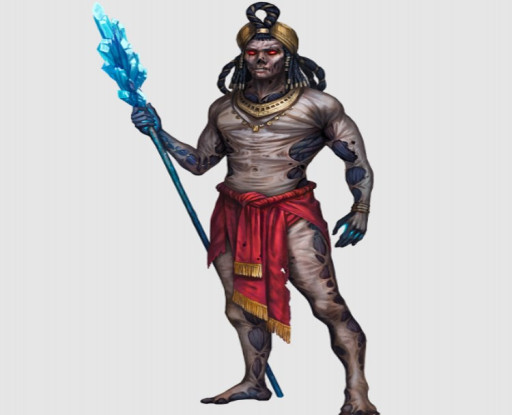
Various cultures in Pathfinder have different ways to mummify their dead. So there are various kinds of mummies. One of the most lethal is the ice mummies.
Let's start with the fact that it has Great Despair. It inflicts the frightened condition on anyone within 20 feet of the mummy. It makes fighters less effective but it gets worse. The aura can also paralyze if the character fails the will save. Ice Mummies can channel their cold rot ability through their weapons to inflict ice damage.
What makes the mummy a challenge to fight is that the cold rot damage can’t be healed by normal means. If your character dies of cold rot, it has to be resurrected by a 7th-level resurrect spell. Unless the party has this spell, the character is permanently dead (or at least until you get to a town to pay a cleric for the spell).
Ice Mummy stats:
- Level 8
- Perception +16; darkvision, snow vision
- Languages Common, Necril; plus any two languages they knew while alive
- Skills Deception +18, Intimidation +16, Occultism +17, Stealth +17
- Str +5, Dex +3, Con +2, Int +5, Wis +4, Cha +6
- Snow Vision The ice mummy ignores the concealed condition from falling snow.
- Items +1 striking staff
- AC 26; Fort +16, Ref +13, Will +18
- HP 130 (negative healing); Immunities death effects, disease, paralyzed, poison, unconscious; Resistances cold 10; Weaknesses fire 10
- Great Despair (aura, emotion, enchantment, fear, incapacitation, mental, occult) 30 feet. Living creatures are frightened 1 while in an ice mummy's great despair aura. They can't naturally recover from this fear while in the area but recover instantly once they leave it. When a creature first enters the area, it must succeed at a DC 24 Will save (after taking the penalty from being frightened) or be paralyzed for 1d4 rounds. The creature is then temporarily immune for 24 hours.
- Speed 20 feet
- Melee staff +20 [+15/+10] (magical, two-hand d8), Damage 2d4+7 bludgeoning plus 1d6 cold and cold rot
- Melee fist +19 [+15/+11] (agile, magical), Damage 2d6+7 bludgeoning plus 1d6 cold and cold rot
- Channel Rot (occult, necromancy) The ice mummy can deliver cold rot through melee weapons they wield.
- Cold Rot (cold, curse, disease, divine, necromancy) This affliction can't be reduced below stage 1, nor can damage from it be healed, until successfully treated with remove curse or a similar effect. The affliction can then be removed as normal for a disease. A creature killed by cold rot turns to ice crystals and can't be resurrected except by a 7th-level resurrect ritual or similar magic; Saving Throw DC 24 Fortitude; Stage 1 slowed 1 for 1 round, then carrier with no ill effect (1 minute); Stage 2 5d6 negative damage plus 2d6 cold damage and stupefied 2 (1 day)
- Frozen Breath (cold, concentrate, divine, evocation) The ice mummy exhales a 60-foot cone of razor-sharp ice that deals 5d6 cold and 4d6 slashing damage (DC 26 basic Reflex save). The ice mummy can't use Frozen Breath again for 1d4 rounds.
14. Rust Monster
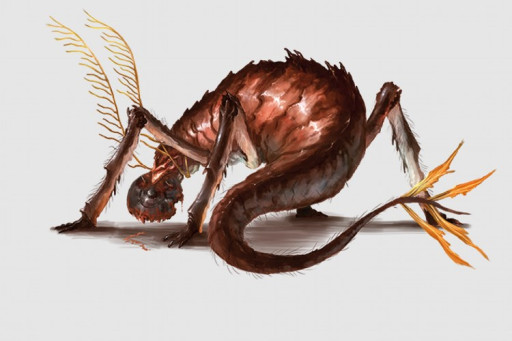
Some challenges in dungeons aren’t about losing your hit points but about losing things that protect your hit points. Monsters that can damage equipment are among the most dangerous. Taking out weapons and armor in a dungeon puts players at a severe disadvantage.
Rust monsters can use their antennas to disarm characters by grabbing their metal items and corroding them. They can also strike a character’s weapons and armor and corrode them. Once the items lose their HP, they’re gone.
The Rust Monster is a big indirect threat that can be used in conjunction with other monsters. Or an encounter can be plotted in the middle of a dungeon crawl after a point of no return. While they probably won’t kill a character, it can make the characters easier to kill for someone else.
Rust Monster stats:
- Level 3
- Perception +8; darkvision, metal scent 30 feet
- Skills Athletics +7 (+13 to Disarm a metal item)
- Str +0, Dex +3, Con +1, Int -4, Wis +1, Cha +0
- Metal Scent A rust monster can smell metal as a precise sense.
- AC 19; Fort +8, Ref +10, Will +6
- HP 40
- Tail Trip Trigger A creature carrying a metal item attempts to move out of a square within reach of the rust monster's tail. Effect The rust monster makes a tail Strike against the triggering creature.
- Speed 35 feet, climb 10 feet
- Melee antenna +10 [+5/+0] (finesse), Effect rust
- Melee mandibles +8 [+3/-2] (finesse), Damage 1d10+4 piercing
- Melee tail +8 [+3/-2] (finesse), Damage 1d4+2 bludgeoning plus Improved Knockdown
- Antenna Disarm The rust monster attempts to Disarm a metal item a creature is holding using its antenna (with the same modifier as an antenna Strike). On a success, the item is subject to the rust monster’s rust ability (see below) in addition to the effects of the Disarm, and if the check to Disarm is a critical success, the rust monster drops the item on the ground in its own space.
- Rust A rust monster’s antenna causes metal to rapidly rust and corrode. If it succeeds at an antenna Strike or Disarm attempt with its antenna, the rust monster deals 2d6 damage (doubled on a critical hit) to a metal item the target is wearing or holding, ignoring its Hardness. If the rust monster hits an unattended metal item, the item takes this damage automatically. If a creature uses the Shield Block reaction with a metal shield against an antenna attack, the shield is automatically broken, but no other item is rusted on that attack.
13. Mimic
(Credit Paizo)
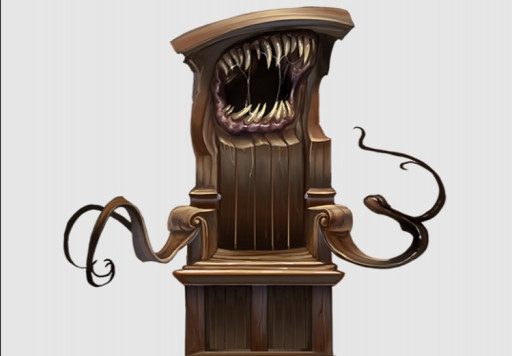
Parties may say they’re going into dungeons to slay the demon, rescue the princess, and do whatever noble things they’ve been asked to do. But really, they’re going in for treasure. Any good deeds are a side benefit. Of course, a good dungeon master should mess with the players now and then.
Enter the mimic. The mimic takes the form of an inanimate object. Most commonly they take the form of a treasure chest or something with a treasure in it. The players go for the treasure and the mimic attacks.
Though the mimic fights alone, it is a dangerous opponent. Anything it touches or touches it gets stuck to it. This includes things like weapons. If it fights mostly close-ranged combatants, it can pose a problem. Ranged fighters and casters will be the key to victory here.
Mimic stats:
- Level 4
- Perception +9; darkvision
- Languages Common
- Skills Athletics +12, Deception +8, Dwelling Lore +10 (applies only to the dungeon it lives in)
- Str +4, Dex +1, Con +3, Int +0, Wis +1, Cha +0
- AC 20; Fort +11, Ref +9, Will +9
- HP 75
- Adhesive The mimic is coated in an adhesive slime. Any creature that hits the mimic, is hit by the mimic, or otherwise touches the mimic must succeed at a DC 23 Reflex save or become grabbed (Escape DC 23). A weapon that hits the mimic is stuck to the mimic and can be removed with a successful DC 23 Athletics check (made as a single action). A mimic can have any number of objects or creatures stuck to it at a time. The mimic can release a stuck creature or object by using a single action, and the adhesive dissolves 1 minute after the mimic dies, releasing all stuck objects and creatures.
- Object Lesson Trigger A creature touches or physically interacts with the mimic while the mimic is transformed using Mimic Object. Effect The triggering creature is automatically stuck by the mimic’s adhesive (it receives no save). The mimic then makes a pseudopod Strike against any creature adjacent to the mimic. Object Lesson can’t be used again until the mimic escapes and takes on a new disguise.
- Speed 10 feet
- Melee pseudopod + 14 [+9/+4], Damage 2d8+4 bludgeoning plus adhesive
- Mimic Object (concentrate, polymorph) The mimic assumes the shape of any Medium object. This doesn't change the mimic's texture or overall size but can alter its coloration and visual appearance. It has an automatic result of 28 on Deception checks and DCs to pass as the object that it's mimicking.
12. Raja Rakshasha
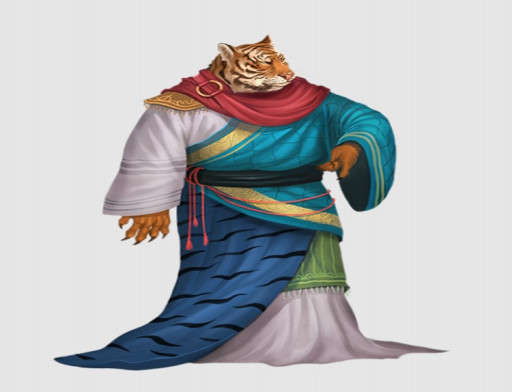
Other things that inhabit dungeons include fiends and demons. One major threat is the Raja Rakshasha. These arrogant fiends view themselves as gods and have a lot of physical and magical power to back up that view.
The Rajas often attack with packs of worshippers. Said worshippers can either be genuine or compelled via physical or magical force. Being able to change shape, they can lead parties into traps and get the drop on them if they don’t detect the ruse in time.
The Rajas can excel in either physical or magical combat. They have resistance to physical damage unless it’s piercing and they hit pretty hard. However, they also have pretty powerful magic. They can use their scoff at the divine ability to debuff characters. Their shadow blast spell lets them blast a damaging cone of any element they choose. They also have considerable illusion and enchantment spells
Raja Rakshasha stats:
- Level 10
- Perception +19; darkvision
- Languages Common, Infernal, Undercommon
- Skills Deception +23, Diplomacy +21, Intimidation +21, Occultism +18, Performance +19, Stealth +20
- Str +4, Dex +6, Con +4, Int +2, Wis +1, Cha +5
- Items +1 striking kukri
- AC 30; Fort +19, Ref +21, Will +18; +2 status to all saves vs. magic, +3 status to all saves vs. divine magic
- HP 155; Resistances physical 10 (except piercing); Weaknesses good 10
- Scoff at the Divine Trigger A creature within 30 feet casts a divine spell or uses a divine ability. Requirements The raja rakshasa has an unexpended spell slot that can be used to cast dispel magic. Effect The raja rakshasa expends a spell slot that could be used to cast dispel magic and attempts to counteract the triggering spell or ability. The raja rakshasa can’t Scoff at the Divine for 1d4 rounds.
- Speed 35 feet
- Melee kukri +23 [+19/+15] (agile, finesse, magical, trip), Damage 2d6+10 slashing
- Melee fangs +20 [+16/+12] (agile, magical), Damage 2d12+10 piercing
- Melee claw +22 [+18/+14] (agile, finesse, magical), Damage 2d8+10 slashing
- Occult Spontaneous Spells DC 31;5th dispel magic, hallucination, shadow blast (3 slots); 4th clairvoyance, dispel magic, fly, suggestion (4 slots); 3rd clairaudience, dispel magic, nondetection, vampiric touch (4 slots); 2nd blur, hideous laughter, invisibility (4 slots); 1st charm, illusory object, item facade (4 slots); Cantrips (5th) detect magic, ghost sound, mage hand, read aura, sigil
- Occult Innate Spells DC 31; 3rd mind reading (at will)
- Change Shape (concentrate, occult, polymorph, transmutation) The raja rakshasa takes on the appearance of any Medium humanoid. This doesn’t change the raja rakshasa’s Speed or its attack and damage modifiers with its Strikes but might change the damage type its Strikes deal (typically to bludgeoning). It typically loses its fangs Strike unless the humanoid form has fangs or a similar unarmed attack.
- Disturbing Vision (concentrate, enchantment, mental, occult) The raja rakshasa’s eyes flash green as it projects a telepathic wave in a 30-foot emanation. All creatures in the area are assailed by a vision of evil decadence from one of the rakshasa’s past lives. Each non-evil creature in the area must succeed at a DC 29 Will save or become sickened 1 (and stunned 1 on a critical failure). The visions last 1d4 rounds, and while they do, the raja rakshasa and all evil creatures in the area gain a +1 status bonus to all checks. The raja rakshasa can use this ability again only once the previous visions end.
11. Barbazu
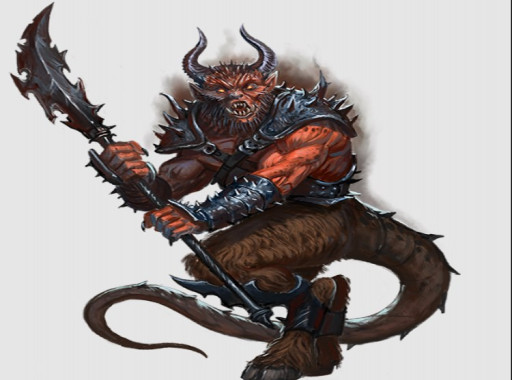
These demons are often summoned in dungeons to protect the casters and cultists that take up residence there. While they are on the lower end of the demon hierarchy, they often attack in numbers. Particularly when summoned, Cruel and merciless, these malicious demons are a threat to midlevel parties.
Defense-wise, they have resistance to damage from weapons that aren’t silver. They are also immune to fire. If casters haven’t diversified their spells, they could be useless. They can also cause avernal fever with their beards which enfeebles characters.
One of the bigger hazards is their glaive. It has a 10-foot range and in addition deals bleed damage that is difficult to heal. Furthermore, their beards ignore the multiple-attack penalty. Their ability to reposition characters and put them in less advantageous positions is something to beware of since Barbazu are summoned and attack in packs.
Barbazu stats:
- Level 5
- Perception +13; greater darkvision
- Languages Celestial, Common, Draconic, Infernal; telepathy 100 feet
- Skills Acrobatics +11, Athletics +13, Intimidation +10, Religion +11, Stealth +11
- Str +4, Dex +2, Con +4, Int -2, Wis +2, Cha +1
- Items glaive
- AC 22; Fort +15, Ref +11, Will +11; +1 status to all saves vs. magic
- HP 60; Immunities fire; Resistances physical 5 (except silver), poison 10; Weaknesses good 5
- Attack of Opportunity
- Speed 35 feet
- Melee glaive +15 [+10/+5] (deadly 1d8, evil, forceful, magical, reach 10 feet), Damage 1d8+7 slashing plus 2d6 evil and infernal wound
- Melee claw +15 [+11/+7] (agile, evil, magical), Damage 2d6+7 slashing plus 1d6 evil
- Melee beard +15 [+10/+5] (magical), Damage 1d6+7 piercing plus Avernal fever
- Divine Innate Spells DC 19; 5th dimension door; 4th dimension door (at will)
- Rituals DC 19; 1st infernal pact
- Avernal Fever (disease) Saving Throw DC 23 Fortitude; Stage 1 carrier with no ill effect (1 day); Stage 2 enfeebled 1 (1 day); Stage 3 enfeebled 2 (1 day)
- Infernal Wound (divine, necromancy) A bearded devil’s glaive Strike also deals 1d6 persistent bleed damage that resists attempts to heal it. The flat check to stop the bleeding starts at DC 20. The DC is reduced to 15 only if the bleeding creature or an ally successfully assists with the recovery.
- The DC to Administer First Aid to a creature with an infernal wound is increased by 5. A spellcaster or item attempting to use healing magic on a creature suffering from an infernal wound must succeed at a DC 21 counteract check or the magic fails to heal the creature.
- Reposition Trigger The devil hits a creature with a glaive Strike. Effect The devil moves the creature 5 feet in any direction. The destination square must be within reach of the devil’s glaive. This movement doesn’t trigger reactions.
- Wriggling Beard Frequency once per round. Effect The barbazu makes a beard Strike. This Strike ignores their multiple-attack penalty and doesn’t count toward that penalty.
10. Grave Hag
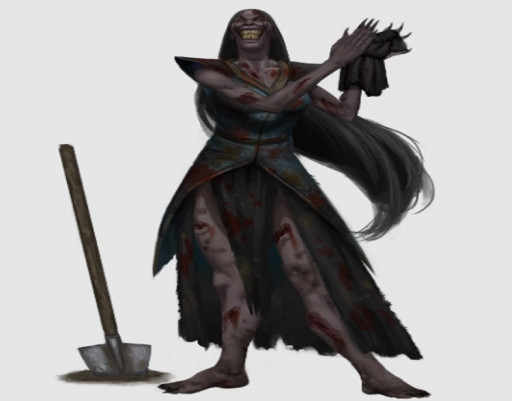
Hags are among the most feared types of dungeon creatures. Typically, they form covens and research dark magic. Grave hags are no exception but they are also more dangerous. When faced as a group, these hags can be a challenge and they can cause a major long-term issue.
They have powerful melee attacks and their grave ray is no joke either. However, the real threat they pose is their magic. They have the spell animate dead. Because they’re high-level, they can summon other undead. And their Grave Impressions ability allows them to potentially knock a character into unconsciousness and render them vulnerable to their undead minions.
The bigger problem is the Curse of. The Grave. If the party fails to slay the hags, they will be hounded by undead attackers night after night. These undead are equal to the hag’s level. A dungeon master could use this as a plot point.
Grave Hag stats:
- Level 9
- Perception +18; darkvision
- Languages Aklo, Common, Jotun, Necril
- Skills Arcana +19, Athletics +19, Crafting +17, Deception +17, Medicine +18, Occultism +19, Society +17, Stealth +18
- Str +6, Dex +3, Con +4, Int +6, Wis +3, Cha +4
- Coven A grave hag adds harm, mimic undead, and the call spirit ritual to her coven's spells.
- AC 28; Fort +19, Ref +16, Will +18; +1 status to all saves vs. magic
- HP 155; Immunities negative; Weaknesses cold iron 10
- Sacrifice Ally Trigger The grave hag is adjacent to an ally when the hag is targeted by an attack or an effect that requires a Reflex saving throw; Effect The triggering effect is redirected to target the ally.
- Speed 25 feet
- Melee claw +21 [+17/+13] (agile, magical), Damage 2d8+10 slashing plus Grab
- Ranged grave ray +18 [+13/+8] (necromancy, occult, range 60 feet), Damage 2d12+10 negative
- Occult Innate Spells DC 29, attack +19; 5th abyssal plague, animate dead, cloudkill; 3rd bind undead (×3), vampiric touch; 2nd death knell (at will)
- Curse of the Grave (curse, necromancy, occult) The grave hag names a single creature within 30 feet; that creature must succeed at a DC 28 Will save or be afflicted with a grave curse equal to the hag's level. The curse lasts until the hag chooses to end it or is slain, rather than by returning items. Regardless of the save result, the target is then temporarily immune to the hag's grave curse for 24 hours.
- Grave's Grip Creatures grappled or restrained by the grave hag take a –1 circumstance penalty to saving throws against the grave hag's spells and abilities.
- Grave Impressions (incapacitation, necromancy, occult) The hag targets a living creature within 30 feet and overwhelms it with feelings of entombment. The target attempts a DC 28 Fortitude save and is then temporarily immune to the hag's Grave Impressions for 24 hours.
- Critical Success The target is unaffected.
- Success The target is paralyzed for 1 round.
- Failure The target is unconscious.
- Critical Failure The target is unconscious and can't awaken for 1 hour.
- Undead Mien A grave hag appears as an undead creature to magical effects.
9. Dread Wraith
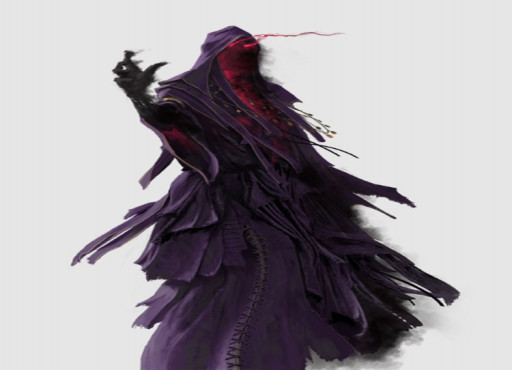
These large wraiths are more powerful than their lesser cousins. Inhabiting dungeons filled with the undead, these creatures command lesser wraiths. They have strong defenses and can be a major problem.
For starters, they have resistance to many things They resist magic except for force spells like magic missiles, positive energy, and weaponry with the ghost touch ability. If the party is not using magic weapons, resistance doubles. Non-magic weapons will do nothing.
The bigger problem is the Draining Presence. Getting close to a Dread Wraith inflicts the drained condition. Which drains HP even before the dread wraith attacks. The dread wraith’s normal attacks can also inflict or increase the drained condition. They can even turn a party member into a wraith if they kill them. Also, they tend to attack with lesser wraiths that can also inflict drain.
Dread Wraith stats:
- Level 9
- Perception +19; darkvision, lifesense 60 feet
- Languages Common, Necril
- Skills Acrobatics +19, Intimidation +21, Stealth +19
- Str -5, Dex +6, Con +3, Int +3, Wis +4, Cha +6
- AC 28; Fort +16, Ref +19, Will +21; +1 status to all saves vs. positive
- HP 130 (negative healing); Immunities death effects, disease, paralyzed, poison, precision, unconscious; Resistances all 10 (except force, ghost touch, or positive; double resistance vs. non-magical)
- Draining Presence (aura, negative) 10 feet. A creature entering the aura must succeed at a DC 26 Fortitude save or become drained 1. It recovers after it has been out of the aura for 1 minute. This drained condition value is cumulative with the drained value caused by drain life, but not with multiple draining presence auras. A creature that succeeds at its save is temporarily immune to draining presence for 24 hours.
- Sunlight Powerlessness A dread wraith caught in sunlight is stunned 2 and clumsy 2.
- Attack of Opportunity
- Speed fly 60 feet
- Melee spectral hand +21 [+16/+11] (finesse, reach 10 feet), Damage 2d10+7 negative plus drain life
- Absorb Wraith The dread wraith extends its hand toward another wraith creature within 100 feet. The target wraith dissolves and streaks toward the dread wraith in a straight line, dealing 6d10 negative damage to each creature along the line (DC 28 basic Fortitude save). The dread wraith absorbs the essence of the target wraith, becoming quickened and gaining a +10-foot status bonus to its fly Speed for a number of rounds equal to the level of the absorbed wraith. It can use its extra action only to Fly or Strike. An unwilling target can attempt a DC 28 Will save to resist being absorbed.
- Drain Life (divine, necromancy) When the dread wraith damages a living creature with its spectral hand Strike, the wraith gains 10 temporary Hit Points and the target must succeed at a DC 28 Fortitude save or become drained 1. Further damage dealt by the wraith increases the drained condition value by 1 on a failed save, to a maximum of drained 4.
- Wraith Spawn (divine, necromancy) A living humanoid slain by a wraith's spectral hand Strike rises as a wraith spawn after 1d4 rounds. This wraith spawn is under the command of the dread wraith that killed it. It doesn't have drain life or wraith spawn. If the creator of the wraith spawn dies, the wraith spawn becomes a full-fledged, autonomous wraith; it regains its free will and gains drain life and wraith spawn.
8. Fallen Champion
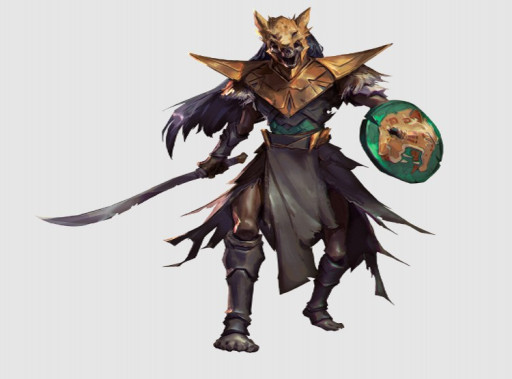
Some crusaders lose their faith upon dying. Commonly, they lose faith in their mission or feel that their god has forsaken them for letting them die. As a result, they get resurrected as violent undead called Herexen. Some of these are more powerful than others.
The Fallen Champion is the strongest variant of Herexen. Usually, they were the leaders of crusades and have a few Herexen with them. They’re undead fighters who have Attack of Opportunity so characters have to navigate that.
The big issue comes from the fact that their weapons do additional negative energy damage and inflict the frightened status. While it’s not a gimmicky fight, fights with the Fallen Champion can be an outright slugfest.
Fallen Champion stats:
- Level 8
- Perception +17; darkvision
- Languages Common, Necril
- Skills Acrobatics +14, Athletics +19, Intimidation +19, Chosen deity Lore +16, Religion +17
- Str +5, Dex +2, Con +5, Int +2, Wis +3, Cha +5
- Items +1 scale mail, defiled religious symbol of a deity, steel shield (Hardness 5, HP 20, BT 10), +1 striking machete
- AC 28; Fort +19, Ref +14, Will +17
- HP 130 (negative healing); Immunities death effects, disease, paralyzed, poison, unconscious
- Agent of Despair (aura, divine, emotion, enchantment, fear, mental) 15 feet. A fallen champion emanates an aura of utter despair. Living creatures are frightened 1 while in a fallen champion's aura. They can't naturally recover from this fear while in the area but recover instantly once they leave the aura.
- Final Blasphemy (divine, necromancy, negative) When the herexen is destroyed, it explodes in a wave of negative energy with the effects of a 4th-level, 3-action harm spell (DC 26). The herexen is destroyed, so it doesn't gain any Hit Points from this use of harm, and it doesn't need to have any harm spells remaining to use this ability.
- Attack of Opportunity
- Shield Block
- Speed 25 feet
- Melee machete +20 [+15/+10] (deadly d8, magical, sweep), Damage 2d6+11 slashing plus heretic's smite
- Divine Innate Spells DC 25; 4th harm (×2)
- Champion Devotion Spells DC 25, 2 Focus Points; 4th touch of corruption, unimpeded stride
- Heretic's Armaments (divine, enchantment) While the fallen champion wields the favored weapon of its former deity, that weapon gains the effect of a fearsome property rune.
- Heretic's Smite (divine, necromancy) While wielding the favored weapon of its former deity (such as a machete for an ex-Kazutal herexen), the herexen's Strikes deal an additional 2d6 evil damage against creatures that can cast divine spells. This damages divine spellcasters who follow the herexen's former faith regardless of their alignment.
- Reap Faith (divine, necromancy) Requirements The fallen champion's last action was a Strike that dealt damage to a living creature; Effect The fallen champion saps the hope and faith from that creature. It takes 3d6 negative damage with a DC 25 basic Will save. Regardless of the result of the save, the creature becomes frightened 1 or increases the value of its frightened condition by 1.
7. Hell Hound
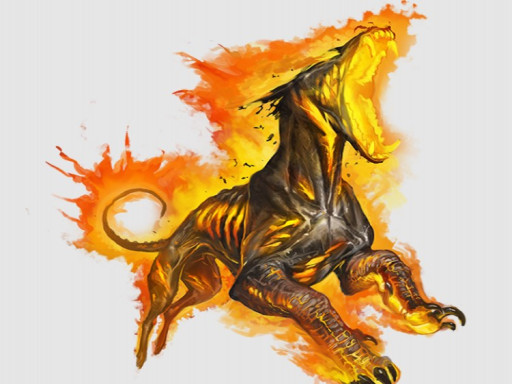
Every dungeon needs a wake-up call encounter. An encounter that tells the players that they aren’t dealing with punching bag goblins, random banditry, or fragile skeletons. A common choice is a skeletal champion. But there are other options. Consider the hell hound.
These dogs are immune to fire. This can pose a problem for new casters who grabbed all the fire spells they could because they sounded cool. Teaching them that error early is a good move for a GM since at a high level, pretty much every other monster resists fire. Offensively, they can pack a mean bite. They not only do 1d8+4 regular damage but a d6 of evil and fire.
Then there’s their breath weapon. Being able to do 4d6 damage to anything within a 15-foot cone is nothing to sneeze at. Since these hounds attack in packs, there’s a lot of potential for harm there. A particularly mischievous GM can make use of another quirk: Getting hit with a fire attack can instantly recharge a hell hound’s fire breath. So whatever summoned them could cast a fire spell on the hounds. Or a hell hound with increased intelligence could breathe fire on the other hounds to charge them up.
Hell Hound stats:
- Level 3
- Perception +9; darkvision, scent (imprecise) 60 feet
- Languages Infernal; (can’t speak any language)
- Skills Acrobatics +8, Athletics +9, Stealth +8, Survival +9 (+11 to Track)
- Str +4, Dex +3, Con +2, Int -2, Wis +2, Cha -2
- AC 19; Fort +9, Ref +10, Will +7
- HP 40; Immunities fire; Weaknesses cold 5
- Speed 40 feet
- Melee jaws +13 [+8/+3] (magical), Damage 1d8+4 piercing plus 1d6 evil and 1d6 fire
- Breath Weapon (divine, evocation, fire) The hell hound breathes flames that deal 4d6 fire damage to all creatures in a 15-foot cone (DC 19 basic Reflex save). The hell hound can’t use Breath Weapon again for 1d4 rounds. If the hell hound would take fire damage or is targeted by a fire effect, its Breath Weapon recharges.
6. Hezrou
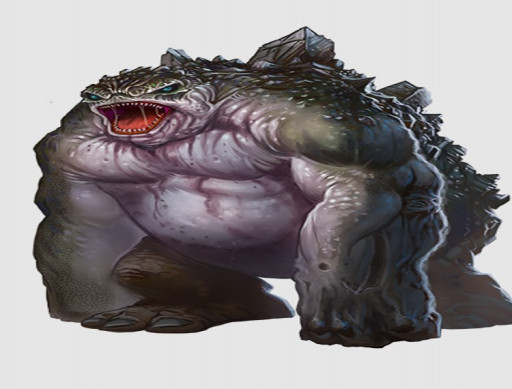
Demons exist to wreak havoc. But different demons wreak different varieties of havoc. While some poison people against each other or just plain attack people, the Hezrou poisons the world around it.
Typically residing in swamps and the dungeons below them, they warp and mutate the animals and plants around them. They have powerful physical attacks. as their claws and jaws do 13 static damage with each attack. The stench it exudes can cause the sickened status.
The poisonous pustules are its real threat. If the Hezrou grabs a character, they can do 2d12+6 damage. It can be the bane of any caster or rogue. Since the Hezrou can have a cult or corrupted animals around him, this fight will be a challenge.
Hezrou stats:
- Level 11
- Perception +21; darkvision
- Languages Abyssal, Celestial, Draconic; telepathy 100 feet
- Skills Arcana +21, Athletics +24, Intimidation +23, Stealth +20 (+24 in swamps)
- Str +7, Dex +3, Con +6, Int +4, Wis +5, Cha +4
- AC 31; Fort +23, Ref +18, Will +22; +1 to all saves vs. magic
- HP 245; Weaknesses cold iron 10, good 10
- Purity Vulnerability A hezrou revels in the foulness it exudes and becomes distraught when contaminations are purified. The first time in a round when a contamination is purified (such as via purify food and drink) or a toxin is neutralized (such as via neutralize poison) within 30 feet of a hezrou, the demon takes 6d6 mental damage.
- Stench (aura, olfactory) 30 feet. A creature entering the aura or starting its turn in the aura must succeed at a DC 27 Fortitude save or become sickened 1 (plus slowed 1 for as long as it's sickened on a critical failure). While within the aura, affected creatures take a –2 circumstance penalty to saves against disease and to recover from the sickened condition. A creature that succeeds at its save is temporarily immune for 1 minute.
- Speed 30 feet, swim 30 feet
- Melee jaws +24 [+19/+14] (evil, magical, reach 10 feet), Damage 2d12+13 piercing plus 1d6 evil and Grab
- Melee claw +24 [+20/+16] (agile, evil, magical, reach 10 feet), Damage 2d8+13 slashing plus 1d6 evil
- Divine Innate Spells DC 27; 6th divine wrath, paranoia; 5th abyssal plague, dimension door; 4th dimension door (at will), divine wrath (at will), gaseous form
- Rituals DC 27; 4th blight; 1st abyssal pact
- Poisonous Pustules (poison) Requirement The hezrou is grappling a creature; Effect Toxic fluids spurt from burst boils and weeping wens on the hezrou's body. A creature grabbed or restrained by the hezrou takes 2d12+6 poison damage (DC 30 basic Fortitude save).
5. Lamia Matriarch
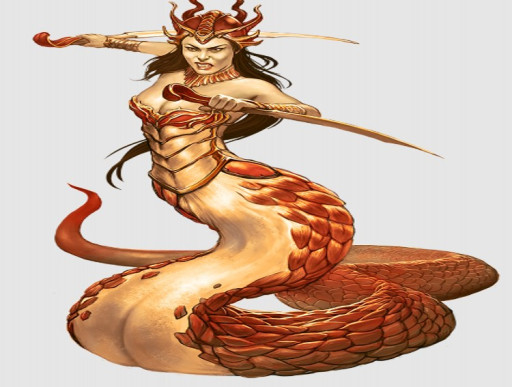
Cursed by the gods to a monstrous form, the lamias are not happy about their situation. And they want to take it out on anyone in their vicinity. The lamia matriarchs are the most powerful.
They can use their scimitars for multiple attacks. They can hit hard. If the queen has more than one lamia, they can overwhelm a single opponent.
Equally problematic are their magic spells. Lamia Matriarchs can defend themselves with spells like mirror image, or control the battlefield with various mind control spells. And she's far better at it than the other lamia.
Lamia Matriarch stats:
- Level 8
- Perception +15; darkvision
- Languages Abyssal, Common, Draconic
- Skills Athletics +18, Cult Lore +15, Deception +20, Diplomacy +20, Intimidation +18, Occultism +17, Stealth +16, Survival +13
- Str +6, Dex +4, Con +3, Int +3, Wis +3, Cha +6
- Items +1 striking scimitar
- AC 27; Fort +13, Ref +18, Will +17; +1 status to all saves vs. magic
- HP 135; Immunities controlled; Resistances mental 10
- Speed 30 feet, climb 30 feet, swim 30 feet
- Melee scimitar +19 [+14/+9] (forceful +2, sweep), Damage 2d6+10 slashing
- Occult Spontaneous Spells DC 28; 3rd dispel magic, enthrall, haste, mind reading (4 slots); 2nd blur, death knell, illusory creature, invisibility (4 slots); 1st bless, magic missile, phantom pain, soothe (4 slots); Cantrips (3rd) daze, detect magic, mage hand, prestidigitation, read aura
- Occult Innate Spells DC 28; 4th charm (x3), suggestion (x3); 3rd sleep; 2nd illusory disguise (at will), illusory object (at will), mirror image; 1st ventriloquism (at will)
- Change Shape (concentrate, occult, polymorph, transmutation) The lamia matriarch can take on the appearance of a Medium humanoid. This doesn’t change their Speed or their attack and damage modifiers with their Strikes, but it does prevent them from using their cursed touch. Each lamia matriarch has a fixed humanoid form—they cannot adopt a different appearance each time they use this ability, and the appearance resembles that of their upper torso when in their true form.
- Dervish Strike The lamia matriarch makes a scimitar attack against each enemy within reach. Each attack counts toward their multiple-attack penalty, but the penalty does not increase until after all the attacks. The first enemy she damages is subject to the matriarch’s caress.
- Matriarch's Caress (curse, enchantment, mental, occult) The lamia touches a creature, who must succeed at a DC 28 Will save or become stupefied 1 (stupefied 2 if critically failed). If the target fails additional saves against this ability, the condition value increases by 1 if failed or 2 if critically failed (to a maximum of stupefied 4). This condition value decreases by 1 every 24 hours.
4. Ba’aupa Mdodu
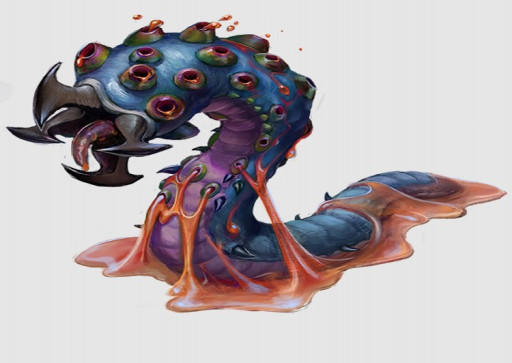
This giant worm creature is not malicious in the traditional sense. It’s not evil. However, this slimy creature remains a major obstacle. And not just by pronouncing its tongue-shattering name.
The Mdodu can deal acid damage with each of their attacks. And when they do acid damage, they can inflict the drained status. While drained is more easily cured at this level than at lower levels, it’s still painful in the middle of a fight.
The biggest problem is the caustic rain attack. When the mdodu uses this ability, everything around them takes 14d6 damage. The mdodu is a medium-sized creature, more than one may be encountered at once.
Ba'aupa Mdodu stats:
- Level 13
- Perception +23; darkvision, skeleton sense 60 feet, tremorsense (imprecise) 30 feet
- Skills Athletics +27, Stealth +25
- Str +8, Dex +4, Con +5, Int -4, Wis +4, Cha -2
- Skeleton Sense A ba'aupa mdoudu can sense the presence of bones and skeletons within 60 feet; this is a precise sense when detecting dead bones but an imprecise one when detecting living bones.
- AC 33; Fort +26, Ref +21, Will +23
- HP 245; Immunities acid; Resistances bludgeoning 15
- Reactive A ba'aupa mdoudu gains an additional reaction at the start of its turn but can use this reaction only to Slime Squirt.
- Slime Squirt Trigger A creature inflicts slashing or piercing damage on the ba'aupa mdoudu with a melee Strike; Efiect The attacking creature takes 2d10 acid damage.
- Speed 30 feet, burrow 20 feet
- Melee jaws +27 [+22/+17] (deadly d12), Damage 3d8+14 piercing plus 1d10 persistent acid
- Ranged spit +23 [+18/+13] (acid, range increment 60 feet), Damage 6d6 acid
- Caustic Acid Whenever a creature takes acid damage from any of a ba'aupa mdoudu's abilities or Strikes, it must succeed at a DC 30 Fortitude save or become drained 1 (drained 2 on a critical failure). On each subsequent failure, the drained condition value increases by 1 (or by 2 on a critical failure), to a maximum of drained 4.
- Caustic Rain (evocation, primal) The ba'aupa mdoudu spews copious amounts of acid into the air, creating a cascading rain to fall in a 10-foot radius around itself. All creatures in the area take 14d6 acid damage (DC 33 basic Reflex save). The ba'aupa mdoudu can't use Caustic Rain again for 1d4 rounds.
- Stone Tunneler A ba'aupa mdoudu can leave a tunnel when it burrows through earth or stone, and it usually does.
3. Troll Kings
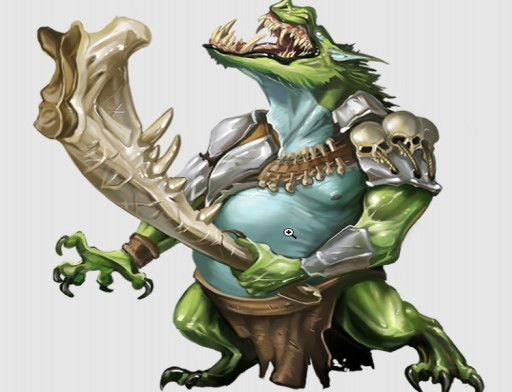
Trolls are cave-dwelling creatures. The strongest and most long-lived trolls become troll kings. The trolls, already physically powerful, submit to the powerful troll king and carry out his will. Together they can devastate a local ecosystem.
Trolls have amazing regenerative powers on top of their high HP. Troll kings have this ability to an even greater extent. Even if you knock them unconscious, they will still regenerate. The way to counter it is with acid or fire. However, they can shake off persistent damage and use Primordial Roar to inflict the frightened condition.
The big problem with the troll kings is that they hit hard. Their Unstoppable Charge lets them charge into a formation. They can hit opponents during and at the end of the movement. Plus, they have a 10-foot reach. This gives the troll king more options for the charge.
Troll King stats:
- Level 10
- Perception +19; darkvision
- Languages Jotun
- Skills Athletics +21, Intimidation +22, Survival +17
- Str +7, Dex +3, Con +7, Int-1, Wis +1, Cha +4
- AC 28; Fort +23, Ref +17, Will +15
- HP 220, regeneration 30 (deactivated by acid or fire); Weaknesses fire 10
- Attack of Opportunity Vigorous Shake Trigger The troll king takes persistent acid or fire damage. Effect The troll king shakes itself to remove persistent acid or fire effects. The troll king immediately attempts a DC 15 flat check to end the persistent damage that triggered this reaction. If the troll king succeeds at this check, it can immediately use Primordial Roar as part of this reaction.
- Speed 30 feet
- Melee jaws +23 [+18/+13] (reach 10 feet), Damage 2d12+13 piercing Melee claw +23 [+19/+15] (agile, reach 10 feet), Damage 2d8+13 slashing
- Forced Regeneration (concentrate) Requirements The troll king’s regeneration is not currently deactivated. Effect The troll king regains 15 HP.
- Primordial Roar (auditory, emotion, fear, mental) The troll king unleashes a bestial roar. Each non-troll creature within 100 feet must attempt a DC 29 Will save. The creature is then temporarily immune for 10 minutes.
- Critical Success The creature is unaffected.
- Success The creature is frightened 1.
- Failure The creature is frightened 2.
- Critical Failure The creature is frightened 3.
- Rend claw
- Unstoppable Charge The troll king Strides twice in a straight line. It can make up to two claw Strikes during this movement and one jaws Strike at the end of its movement. It can’t Strike the same creature more than once.
2. Animate Dream
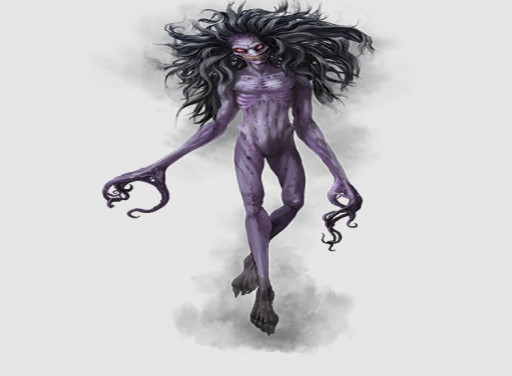
Often enslaved by night hags, the animate dreams have dangerous enchantment and illusion magic. Rarely fought alone, the animate dream’s magic can render a party dysfunctional for their allies/enslavers. However, they’re more than just support monsters.
Their nightmare tendrils do considerable damage. However, if your main source of damage is a raging barbarian, they present an additional issue. The nightmare tendrils can cause fatigue and barbarians cannot rage while fatigued. To add onto things, an Animate dream has a lot of resistance and players need a weapon with ghost touch to damage it fully.
Its main threat is its spells. They can cause confusion, turning the party against itself. And they have the dangerous phantasmal killer.
Animate Dream stats:
- Level 8
- Perception +14; darkvision
- Languages telepathy 100 feet
- Skills Acrobatics +14, Deception +18, Intimidation +18, Occultism +12, Stealth +18
- Str -5, Dex +4, Con +3, Int +0, Wis +2, Cha +6
- AC 24; Fort +15, Ref +18, Will +14; +1 status to all saves vs. magic
- HP 110; Immunities disease, paralyzed, poison, precision, sleep; Resistances all 5 (except force, ghost touch, or negative; double resistance vs. non-magical)
- Speed fly 40 feet
- Melee nightmare tendril +20 [+16/+12] (agile, finesse), Damage 4d8 negative plus endless nightmare
- Occult Innate Spells DC 26; 4th confusion, dimension door (at will), nightmare, phantasmal killer, sleep; 3rd fear
- Endless Nightmare (curse, emotion, enchantment, fear, mental, occult) An animate dream's touch fills the victim's mind with terrifying visions; Saving Throw DC 26 Fortitude; Stage 1 fatigued (1 day); Stage 2 fatigued and stupefied 1 (1 day); Stage 3 The victim falls asleep and can't be awakened as long as they remain at this stage (1 day).
1. Horde Lich
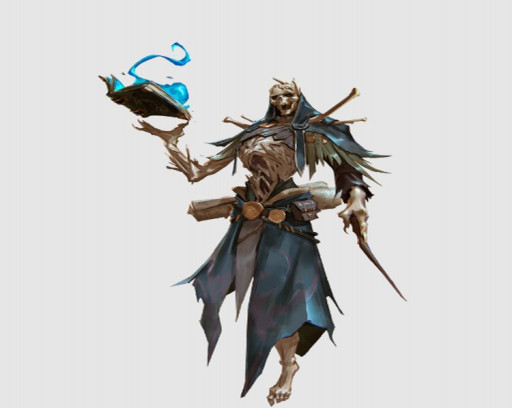
Horde liches are among the most interesting of the undead that resides at the bottom of dungeons. A more powerful form of the lich, they traded away their paralyzing touch for the ability to manifest three separate extensions of themselves. Players who are planning on fighting by staying out of the range of their spells will need a new plan.
The horde lich comes with a vast inventory of spells. Some are decent field control spells but many are just plain painful. These include disintegrate (which does exactly what it says on the tin) and feeblemind, which can potentially turn a character into a mindless animal. The horde lich is built to decimate characters with low will saves.
The spare bodies, called servitors, can cast the same spells. This increases the lich’s range and number of turns. But they do share a major weakness the party can exploit: They all share the lich’s HP. Any damage done to a servitor is done to the lich. This can make a good fight dynamic, particularly if the lich has other undead minions on the board.
Horde Lich stats:
- Level 14
- Perception +14; darkvision
- Languages telepathy 100 feet
- Skills Acrobatics +14, Deception +18, Intimidation +18, Occultism +12, Stealth +18
- Str -5, Dex +4, Con +3, Int +0, Wis +2, Cha +6
- AC 24; Fort +15, Ref +18, Will +14; +1 status to all saves vs. magic
- HP 110; Immunities disease, paralyzed, poison, precision, sleep; Resistances all 5 (except force, ghost touch, or negative; double resistance vs. non-magical)
- Speed fly 40 feet
- Melee nightmare tendril +20 [+16/+12] (agile, finesse), Damage 4d8 negative plus endless nightmare
- Occult Innate Spells DC 26; 4th confusion, dimension door (at will), nightmare, phantasmal killer, sleep; 3rd fear
- Endless Nightmare (curse, emotion, enchantment, fear, mental, occult) An animate dream's touch fills the victim's mind with terrifying visions; Saving Throw DC 26 Fortitude; Stage 1 fatigued (1 day); Stage 2 fatigued and stupefied 1 (1 day); Stage 3 The victim falls asleep and can't be awakened as long as they remain at this stage (1 day).

